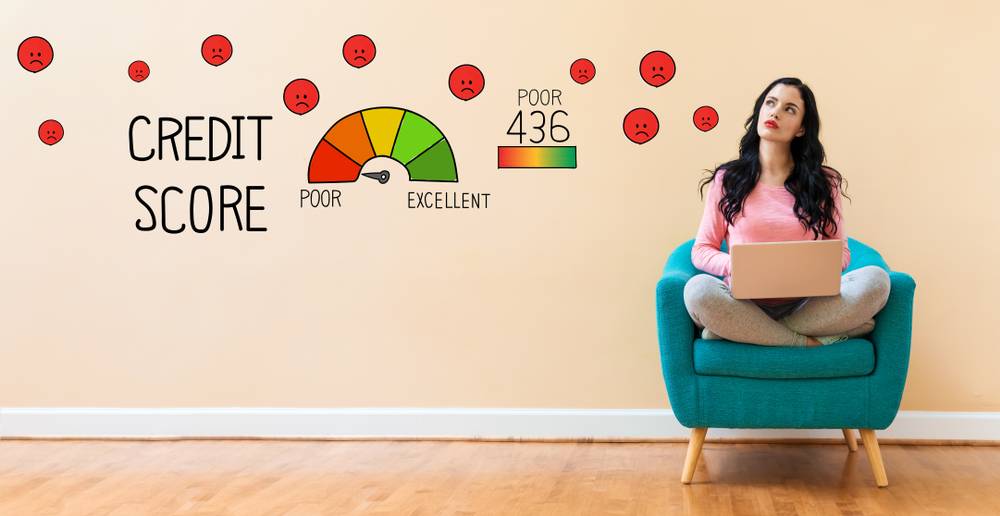
Your credit score plays a significant role in your finances. It determines how much money you can borrow from lenders since it shows them how responsible you were with your past financial obligations. It’s beneficial that you know where to get your credit scores and reports so you can take full control of your financial situation.
As a helpful tip, you can create your own site and help others make the necessary changes in their lifestyle in case they have poor credit history and want to loan money for a mortgage, car, or health plans.
Help others by building a free credit score check website business. Here are the steps to get you started:
- Register a Domain and Look for a Web Host
You need to look for a memorable domain name that relates to what you’re trying to accomplish with your website. It should reflect your credit score check service and set the expectations of web visitors.
Once you have your business name, you must look for an accredited registrar that also offers web hosting. With this service, you ensure that everyone can access your website through the World Wide Web.
- Coordinate with Different Credit Bureaus
Partner with different credit bureaus to provide a holistic glimpse of your visitor’s credit history. There are three organizations that provide credit scores and reports: Experian, Equifax, and TransUnion. Knowing your score with these three institutions will give you a more comprehensive idea of your credit status.
Claim up to $26,000 per W2 Employee
- Billions of dollars in funding available
- Funds are available to U.S. Businesses NOW
- This is not a loan. These tax credits do not need to be repaid
There are two primary scoring models used by institutions in the financial industry. There’s FICO, which was introduced to lenders in 1989 by the Fair Isaac Corporation to standardize credit scores. It’s used by a majority of the top institutions for their lending decisions.
These are the factors that make up the FICO scoring model:
- Payment History– The record of your previous payments make up 35 percent of your total score. This component is crucial in the calculation because of the premise that past long-term behavior can provide a glimpse of your future financial actions.
FICO focuses on credit card dues, which are revolving loans, as well as installment loans, such as mortgages or student loans, and consider the frequency, recency, and severity of missed payments.
- Amounts Owed– This factor comprises 30 percent of your score. Ideally, you should have a credit utilization ratio that’s lower than six percent. People who habitually come close or actually max out credit cards are deemed as financially irresponsible. Thus, they can’t be trusted with additional loans.
- Credit History Length– Some people think that not using credit cards will boost their score. However, the length of time since the account’s recent transaction and how long it’s been open comprise 15 percent of your credit score.
- New Credit– While new credit accounts make up ten percent of your score, it doesn’t mean that you should open multiple credit lines simultaneously. It’s recommended that you open this type of account only when necessary.
- Credit Mix – The last ten percent of your FICO score is taken by credit mix. Repaying various debt products imply that that the borrower can handle different types of credit.
Another is the VantageScore model, which came about in 2006. It was drawn up by Equifax, Experian, and TransUnion as a more predictive scoring process that can be understood and applied with ease.
This model has similar components to FICO with slight differences:
- Payment History– This factor is extremely influential in the calculation of your credit score, similar to FICO’s model. Again, it implies that your past financial behavior can be used to forecast your future actions.
- Age and Type of Credit– This one is a highly influential component. It merges FICO’s credit history length and credit mix factors.
- Credit Limit Usage Percentage– Another highly influential aspect of your credit score, credit limit usage percentage is similar to credit utilization or the borrower’s recorded amounts owed to the lender.
- Total Balances and Debt– This component is only moderately influential, but significant nonetheless. Obviously, the premise is that you’re financially responsible if you have lower debts.
- Recent Credit Behavior– The latest transactions posted on your credit account have slightly less bearing on your score. However, it can still pull down the other factors if you’re not careful.
- Available Credit – It’s another less influential factor that correlates to the other components like total balances and debt as well as credit limit usage percentage.
- Offer Financial Tips
Aside from allowing users to check their credit reports through the three credit bureaus, you can also provide more value to them by offering advice on the various aspects of personal finance. You can provide tips on how to handle debt, save money, and maximize their repayments, among others.
Conclusion
To start your free credit score check website business, you must find a domain name and register it with a web host to ensure that people can access your online service. Next, you should partner with Equifax, Experian, and TransUnion to provide users with a comprehensive idea of their credit scores and reports from these three trusted bureaus. You can also elevate your services by offering tips on how to handle personal finances.



